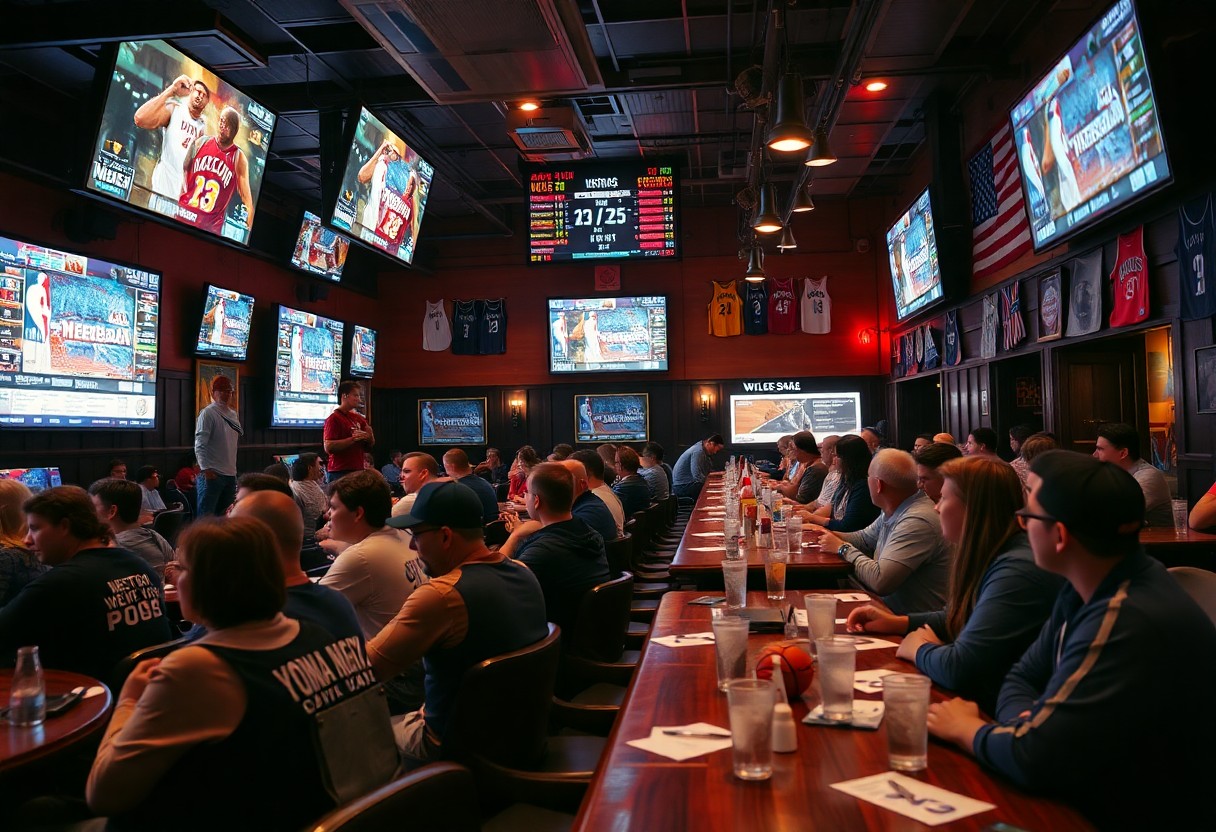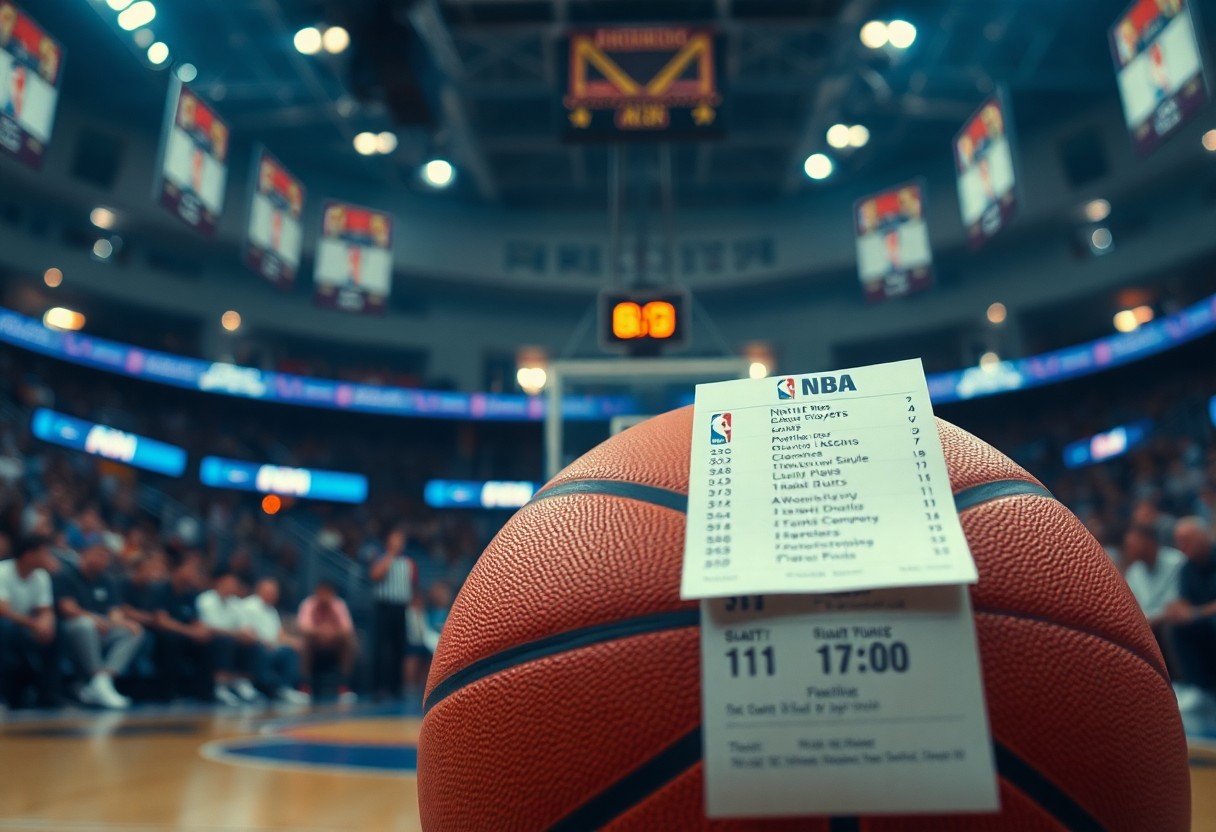Many bettors often underestimate the impact of back-to-back games on NBA teams, yet these situations can significantly influence your betting decisions. As players face the physical toll of consecutive games, fatigue can lead to decreased performance, particularly in their shooting accuracy and defensive capabilities. It’s crucial to analyze team rosters, player health, and travel schedules to better understand how back-to-back games may affect outcomes. By considering these factors, you can gain an advantage in your betting strategy and make more informed choices, enhancing your potential for success.
Key Takeaways:
- Back-to-back games can lead to player fatigue, influencing team performance and potentially affecting betting outcomes.
- Teams with depth, strong benches, or effective rotation strategies may perform better in back-to-back situations, altering betting odds.
- It’s important to consider team matchups, injury reports, and travel schedules when evaluating the impact of back-to-back games on betting choices.
The Dynamics of Player Fatigue
The effects of back-to-back games extend beyond just the physical realm, penetrating deep into players’ mental resilience. Your favorite athletes are not just grappling with tired muscles, but also with the cumulative exhaustion that can undermine decision-making and reaction times. The accelerated pace of the game, especially in high-stakes situations, can lead to a drop in performance levels as players struggle to cope with fatigue.
Physical and Mental Strain of Back-to-Back Games
Intense physical strain is evident as players push their bodies to the limit during back-to-back games. Not only do they experience soreness and reduced stamina, but the repeated demand on their bodies can lead to increased susceptibility to injuries. Mental fatigue compounds this issue, causing lapses in focus, diminished motivation, and ultimately affecting shooting accuracy and strategic execution on the court.
Historical Trends in Performance Decline
Statistical data over the years shows a consistent trend in performance decline when teams face back-to-back games. For instance, teams playing their second game within 24 hours frequently struggle, often winning only 38% of such contests. This pattern is particularly pronounced among older players or those logging more than 30 minutes during the initial game, showcasing a measurable impact on their scoring output and defensive efficiency.
Examining the historical data reveals that teams often exhibit a marked decrease in offensive efficiency, sometimes averaging ten points less per game in back-to-back scenarios. The fatigue factor becomes even more critical for playoff teams, where every basket counts. Supporting documentation from recent seasons indicates that teams with a high average minutes per game for starters show even steeper performance declines, confirming that player fatigue can be a pivotal factor in your betting decisions.
Statistical Scrutiny: Impact on Game Outcomes
Analyzing the historical data of NBA teams during back-to-back games reveals noticeable trends in performance that can inform your betting strategies. Teams typically see a decreased win rate when playing consecutively, particularly when the second game is on the road. For instance, over the last five seasons, teams have recorded approximately 40% win rates in the second game of back-to-back series. This statistic suggests that fatigue affects players’ efficiency, altering the dynamics of match outcomes and offering you a significant edge when assessing betting odds.
Analyzing Win Rates Under Back-to-Back Conditions
The win rates for teams under back-to-back conditions show a stark decline compared to their regular performances. On average, teams that face two games in as many nights only manage to keep a win percentage close to 45%. Key players often experience lower scoring outputs and reduced minutes due to fatigue, which cannot be overlooked when you analyze the match context. This data showcases the potential for value in your betting decisions based on team fatigue.
Home Court Advantage vs. Fatigue Factors
Home teams in back-to-back situations tend to maintain a slight edge over their fatigued opponents, yet that advantage can be offset by the effects of weariness. While home court advantage typically favors teams, the impact of player fatigue must be carefully weighed. A home team playing its second game in two nights could struggle to match the energy of a visiting team, leading to unpredictable outcomes. This interplay between home support and exhaustion presents unique challenges in NBA betting.
- Home court advantage tends to lessen when fatigue is a factor.
- The effect of player fatigue can alter the expected performance levels significantly.
- The value of the betting line can fluctuate based on these dynamics.
On one hand, the home court advantage brings enthusiasm and familiarity that can bolster a team’s morale. However, when combined with the fatigue factors inherent in back-to-back games, even the most supportive crowds may not be enough to push a weary team forward. Consider how teams with strong support at home might still falter if key players are worn out. This contextual understanding of how fatigue interacts with home advantage becomes pivotal when making betting decisions.
- Home court dynamics usually benefit teams playing at home.
- Fatigue’s impact can significantly influence a team’s performance on the court.
- A nuanced understanding of both elements leads to stronger betting predictions.
Betting Strategies Amidst the Chaos
Understanding how to navigate back-to-back games can provide you with a valuable edge in NBA betting. Focus on line movements and team performance during these hectic schedules. Timing your bets to coincide with injury reports as they are released can also yield actionable insights. Prioritize maintaining a flexible attitude as teams recover or fall prey to fatigue, and consider how that may impact the odds before placing your wagers.
Adjusting Odds and Line Movements
Odds and lines can shift dramatically as sportsbooks react to team performance and back-to-back game conditions. A team’s lackluster play following a previous night’s game could lead to inflated odds in their next matchup. Keeping an eye on these movements can unveil potential betting opportunities, particularly if you spot discrepancies between the betting public’s sentiment and the actual performance metrics of the teams involved.
Leveraging Team and Player Injury Reports
Injury reports serve as vital tools in your betting strategy, especially during the wear and tear of back-to-back games. Key player outages or limitations can swing the odds significantly. If a star player is sidelined, the public often reacts swiftly, driving the line in a direction that may not accurately reflect the team’s depth. Any advance knowledge on who may be resting or playing diminished minutes can help tailor your bets effectively, maximizing your chances of capitalizing on the market’s overreactions.
For instance, if a team announces that their leading scorer will not play due to fatigue from previous games, it’s wise to analyze how the rest of the roster performs without them. You might discover hidden value in the line if backup players overperform, leading to a favorable betting situation. Tracking these nuances can provide insights ahead of the betting curve, allowing you to leverage information in a way that many casual bettors may overlook.
The Role of Coaching: Preparation and Adaptation
Coaches play a significant role in navigating the challenges of back-to-back games. Their ability to prepare players mentally and physically before these demanding fixtures can greatly influence outcomes. Effective communication regarding rest schedules, practice intensity, and game strategies is key. Planning for rotational adjustments ensures that players maintain their energy levels throughout the contest, maximizing performance even when fatigue sets in.
Strategies to Combat Player Fatigue
Implementing a variety of strategies can effectively mitigate player fatigue during back-to-back games. This may include limiting playing time for key players, utilizing bench depth, and incorporating lighter practice sessions before games. Additionally, optimizing nutrition and hydration plays a pivotal role in recovery, helping players regain strength and stamina when transitioning from one game to the next.
Key Coaches Who Excel in Managing Back-to-Back Games
Coaches like Doc Rivers and Gregg Popovich have consistently showcased their expertise in managing back-to-back game scenarios. Their teams often demonstrate resilience and strategic acumen, reflecting adept player rotations and rest management. For instance, Popovich famously employs a disciplined approach to load management, ensuring that his stars remain fresh without sacrificing competitiveness. Rivers, likewise, emphasizes game tape analysis to fine-tune strategies such as defensive schemes that can be adjusted based on player fatigue levels, allowing his squads to maintain high performance under pressure.
The Future of NBA Scheduling and Implications for Bettors
The NBA is actively exploring scheduling changes to accommodate players and enhance the quality of play. Implementing strategies to minimize back-to-back games and optimize travel logistics could lead to a healthier and more competitive league. For bettors, understanding these changes is vital, as they could significantly impact team performance and betting outcomes. As the league evolves, staying informed about scheduling refinements will give you an edge in placing informed bets.
Proposed Changes to Reduce Back-to-Backs
One approach considers extending the regular season by adding more off-days between games or adjusting the number of games per week. Shifting from a compressed schedule has the potential to alleviate player fatigue and enhance game quality. Teams may also favor a reduced number of travel-heavy stretches, ultimately impacting player performance and, as a result, betting dynamics.
Long-term Effects on Betting Patterns and Outcomes
Changes to NBA scheduling could result in substantial shifts in betting patterns over time. Reducing back-to-back games could increase overall team performance consistency, leading to tighter spreads and making games less predictable. As teams become more rested, you might find it difficult to rely on previous performance trends, necessitating a more analytical approach to your betting strategies.
As you adapt to these evolving trends, a close examination of team performance patterns in relation to rest days will be crucial. For instance, data may reveal that teams with extended breaks show improved shooting percentages or better defensive statistics. These insights would encourage you to utilize updated metrics and analytics in predicting game outcomes more accurately. Being proactive in tracking these developments will enhance your betting strategies and help you stay ahead of the game.
Conclusion
So, as you consider your NBA betting strategies, understanding the impact of back-to-back games is imperative. These matches often result in fatigue and lower performance levels for teams, which can influence game outcomes and betting odds. By analyzing the schedules, player rest, and team dynamics, you can make informed betting decisions that enhance your chances of success. Stay ahead of the game by incorporating this insight into your betting approach for smarter bets and potentially better returns.
Q: How do back-to-back games impact player performance in the NBA?
A: Back-to-back games can significantly influence player performance due to fatigue. Players may experience reduced energy levels, which can lead to decreased shooting accuracy, lower rebounding stats, and overall diminished effectiveness on the court. The extent of this impact can vary based on the player’s age, fitness level, and amount of playing time in the previous game. Additionally, teams may opt to rest key players during a back-to-back, further affecting game dynamics.
Q: Are there specific teams that perform better or worse during back-to-back games?
A: Yes, some teams have historically shown patterns of performance during back-to-back games. Factors such as team depth, coaching strategies, and travel schedules play a significant role in how teams handle the fatigue associated with consecutive games. For instance, teams with stronger bench players might fare better since they can rotate in fresh legs, reducing the burden on starters. Analyzing past performance data related to back-to-back matchups can provide valuable insights for NBA betting.
Q: What strategies can bettors employ when betting on back-to-back NBA games?
A: Bettors can enhance their strategies by closely monitoring team news, player conditions, and historical performance in back-to-back games. It is necessary to keep an eye on injury reports, as well as any indications of player rest, especially among key contributors. Additionally, reviewing statistical trends for teams playing consecutively can help bettors identify potential advantages or disadvantages. Staying updated on travel distances and overall team morale post-game could also lead to advantageous betting decisions.



